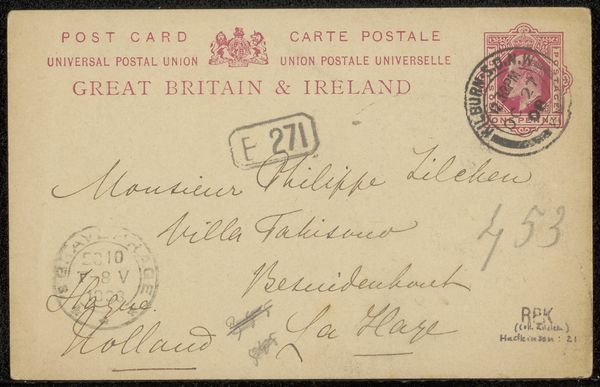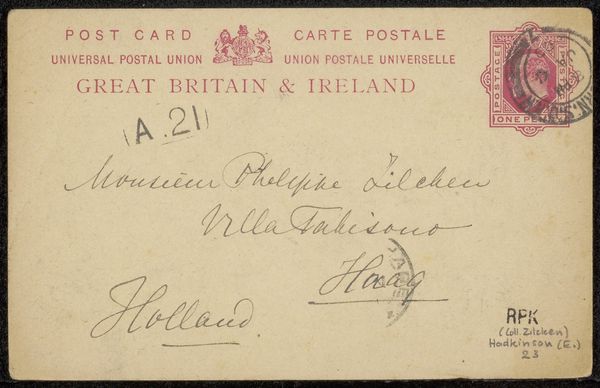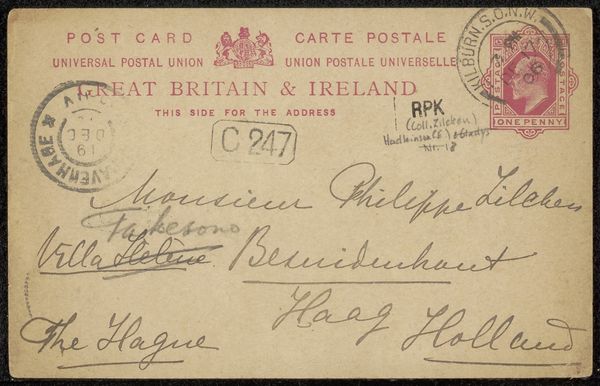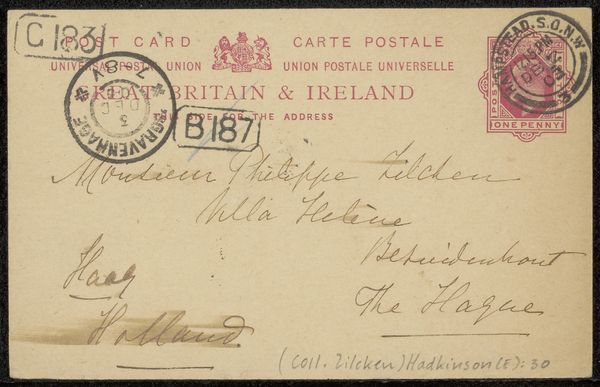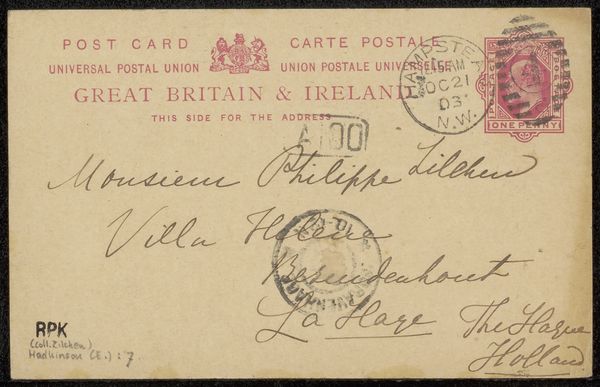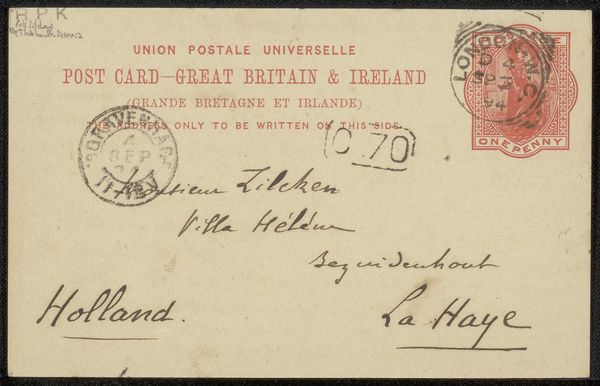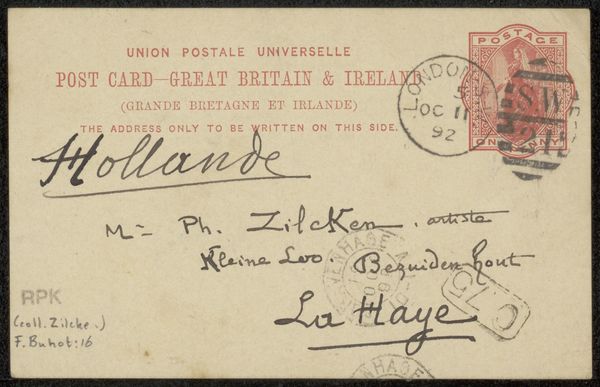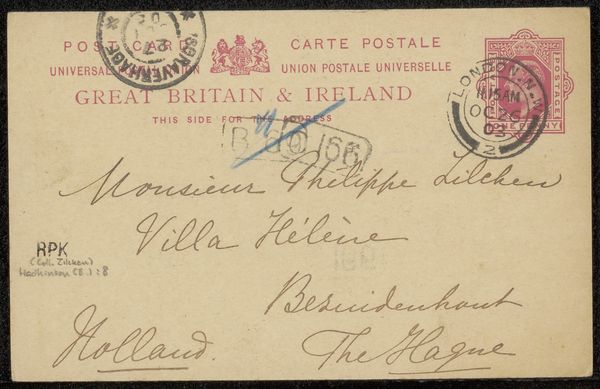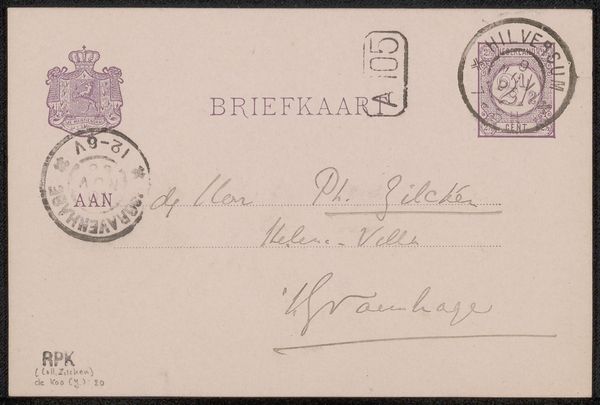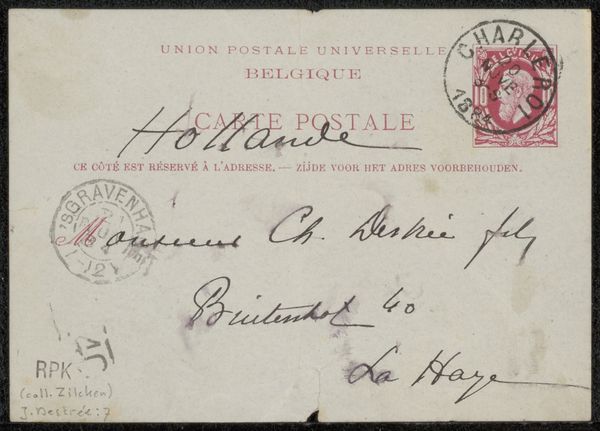
paper, pen
#
script typography
#
hand-lettering
#
old engraving style
#
hand drawn type
#
hand lettering
#
paper
#
personal sketchbook
#
hand-drawn typeface
#
pen work
#
sketchbook drawing
#
pen
#
sketchbook art
#
calligraphy
Copyright: Rijks Museum: Open Domain
Curator: We're looking at "Briefkaart aan Philip Zilcken," a postcard possibly dating back to 1909, made with pen on paper. Editor: My immediate impression is one of intimate correspondence, but also constraint; it is a quiet glimpse into the past. The script seems precise yet personal. Curator: It’s more than just personal; it’s also a cultural artifact. The postal markings themselves are significant. “Great Britain & Ireland” along with “Union Postale Universelle” speaks to both local and global contexts. Editor: Exactly! See how the circular postal stamp creates a halo effect around the '09? Circles, historically, symbolize continuity, wholeness, even the eternal. What was considered eternal in 1909 may reflect current perceptions of class and cultural connectivity through time and across nations. Curator: Indeed, the Edwardian era marked transitions and consolidations within global empires, and the postcard illustrates a network facilitated by these empires. What does it mean for Zilcken to be on the receiving end of this? Where does the postcard fit into an intellectual framework when sent to a 'Villa' abroad? What statements is this postcard making? Editor: Villa Takisono... exotic. The address itself evokes a merging of European aspiration with perhaps an orientalist fascination. The handwriting adds layers. Each curve, each connecting line serves as symbolic ligature, connecting sender and recipient, place to place. Even the denomination "ONE PENNY" on the stamp echoes values placed on time and its inherent worth in this moment, in relation to the sender and recipient. Curator: The card functions as a marker of class and belonging; someone named Philippe Zilcken and the sender of this postcard exist within interconnected networks where mail itself becomes a status symbol. Also consider the postcard as a medium itself; why this form of communication in that era? Editor: Perhaps because postcards carry immediacy, visual information; maybe something the sender wanted Philip Zilcken to quickly glimpse. Now, this humble fragment becomes part of our cultural inheritance to be interpreted beyond the explicit message written in beautiful script. Curator: It makes you wonder what images were selected in tandem with such a well-composed card. Editor: Looking at this correspondence, I'm struck by how such seemingly mundane objects become charged with historical and personal significance.
Comments
No comments
Be the first to comment and join the conversation on the ultimate creative platform.

